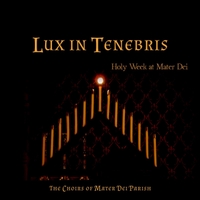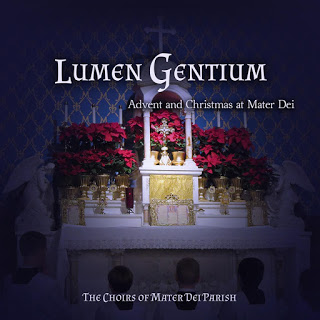This is the first part in “A Tale of Two Sub Tuums”.
To Write a Sub Tuum
There is great excitement in our parish that our hoped and prayed-for building project will be successful. Still, we have a long way to go. It may be some years before we break ground. Our Lady has a way of overcoming obstacles, and our choir director is already thinking about music for the church dedication. I have a special reason to be excited, for I was honored with the task of composing a new hymn for the occasion.
The parish has, for myriad reasons, a strong devotion to our patroness, the Mother of God. She has come to our rescue on many occasions. Our reliance on her intercession and maternal care is voiced also in a tradition we have of chanting the Sub Tuum after every sung Mass, just before the recessional hymn. When our choir director requested I write a polyphonic setting of the Sub Tuum, I was immediately enthused and went to work on it right away.
Six days later… (yes, I was very excited) … in spite of going to work (did I mention being excited?) … and taking as my inspiration this image of Our Lady, club in hand, ready to beat the devil, I had the following six part Sub Tuum:
This piece isn’t really a joyous, glorious, grand recessional, is it? Indeed not. This fact led me back to the drawing board. That, however, is part 2, whose story will have to wait until after the new church is built. While we wait, I would like to share this piece, as it will not be used for the original purpose.
The Six Part Setting
This first Sub Tuum is written for SSATBB and is broken into two distinct parts: the address and the supplication. In the address, we fly to Our Lady’s protection, much as the young child runs toward her in the picture. (The Latin praesidium also has a military sense.) The supplication begins with a cantor chanting nostras deprecationes ne despicias in necessitatibus (despise not our petitions in our necessities).
The heart of the supplication follows, as each voice in imitation cries out: sed a periculis cunctis … libera nos semper! (but from all dangers, deliver us always). With the open texture, I hoped to invoke a medieval, if not Byzantine sound; for the Sub Tuum is an ancient prayer. As the parts trade off Es and Bs, they seem to produce a false organum or drone. In this section, I feel I can almost see the sound bouncing off the walls of a large open church, while Our Lady beats the living daylights out of the devil.
The choir then doubles down (or doubles up) with two parts each entering together and repeating the sed a periculis cunctis even louder until the diminishing libera nos semper melds into Virgo gloriosa et benedicta, and we have suddenly transitioned into compound meter without altering the tempo.
The score is freely available for download using the link below. I hope it may be of use to someone, and I always appreciate feedback.
About the Featured Image
The featured image is Our Lady of Perpetual Help, and is in the public domain in the United States. See this link for more details.





